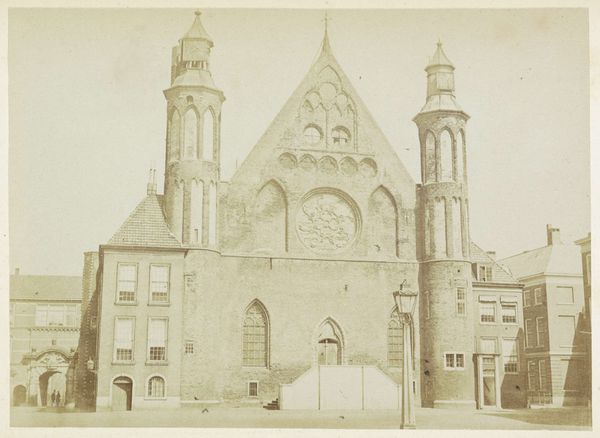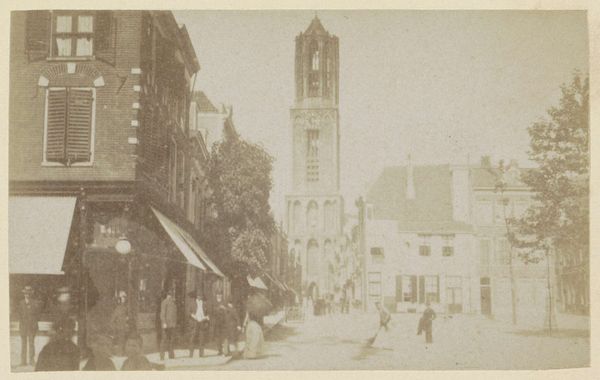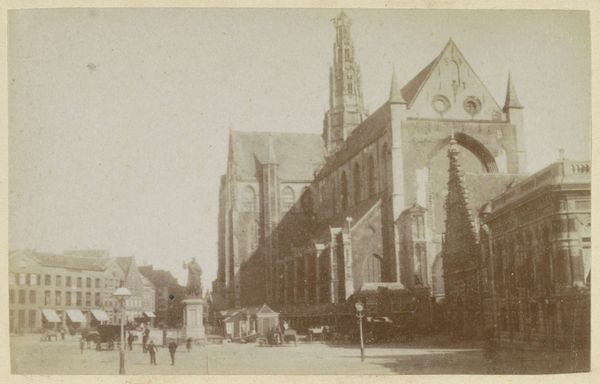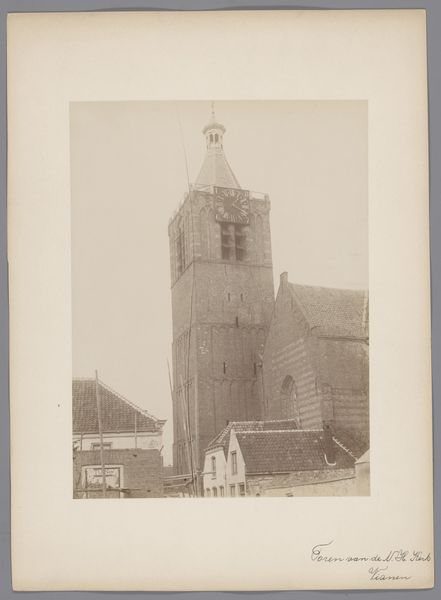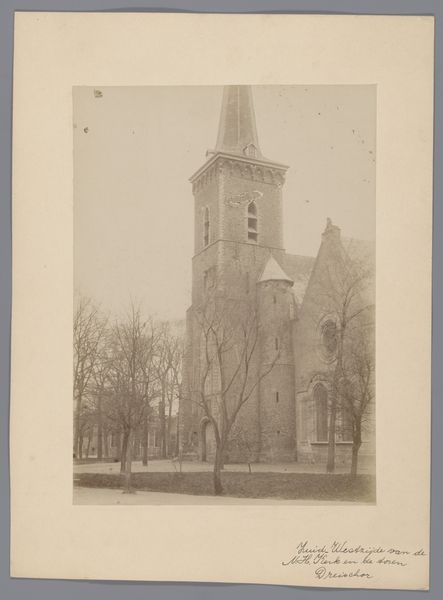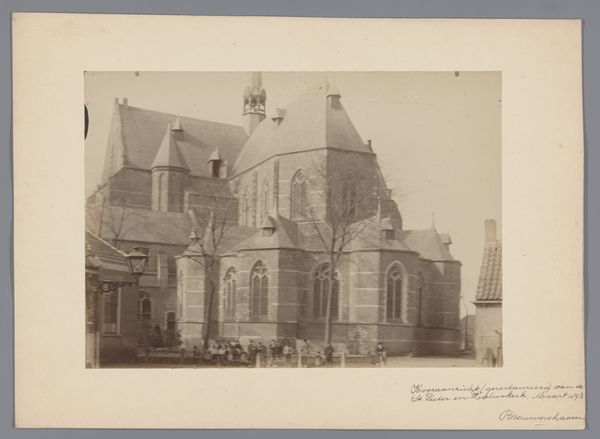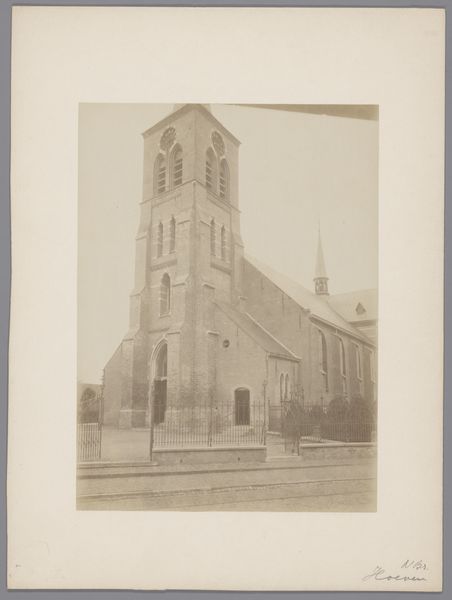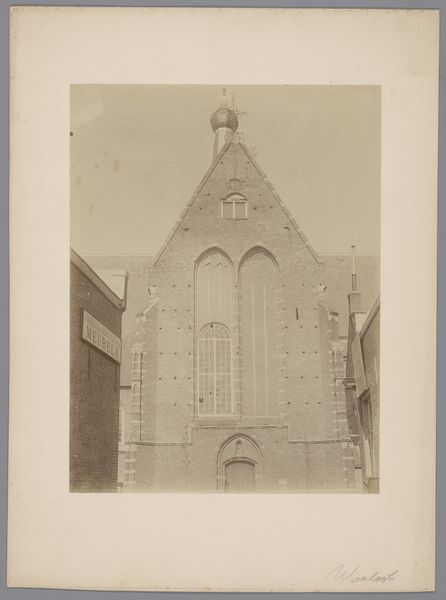
photography, gelatin-silver-print
#
landscape
#
photography
#
historical photography
#
gelatin-silver-print
#
19th century
#
cityscape
#
building
Dimensions: height 50 mm, width 80 mm
Copyright: Rijks Museum: Open Domain
Editor: This is an evocative gelatin-silver print from the Rijksmuseum, "Gezicht op de Ridderzaal in Den Haag," dating from around 1860 to 1900, by Andries Jager. The hazy sepia tones create a really strong sense of the past. What aspects of the Ridderzaal and its representation do you find most striking? Curator: What I see here is a conscious framing of power and permanence. Photography at this time was still relatively new, a technology primarily accessible to the elite. How does this photographic gaze, fixed on a site of governance, reinforce existing social hierarchies? Editor: So, the act of photographing the Ridderzaal becomes an endorsement of its authority? Curator: Precisely. Think about who is absent from the frame. Where are the working class? How might their perspective of the Ridderzaal differ? And how does this photograph contribute to a constructed narrative of Dutch national identity? Editor: It's interesting to consider the silences within the image – the stories that aren't being told. Curator: This is a period of intense nation-building across Europe. Images like this weren't just documentation; they actively participated in crafting national mythologies. Do you think that this photograph is trying to evoke a particular mood about the Netherlands at that time? Editor: I think it wants to evoke the grand scale of The Hague's important buildings, and the enduring nature of power...a timeless feel. Considering the date, just before mass production, it also signals a unique preciousness, which speaks of social class again, like you mentioned. Curator: It encourages us to be more critically aware of how seemingly neutral depictions can carry significant ideological weight. Editor: This has changed my perception of the photograph; I now see its historical role as a kind of visual rhetoric, one that subtly champions and justifies power through its very act of documentation. Curator: That's right.
Comments
No comments
Be the first to comment and join the conversation on the ultimate creative platform.
